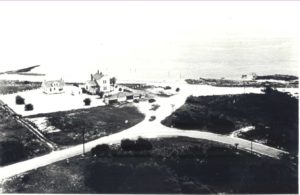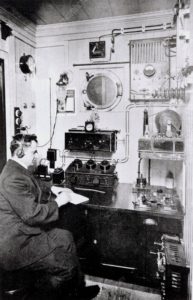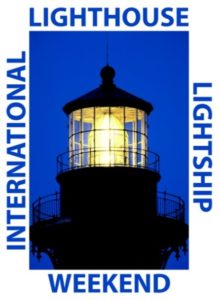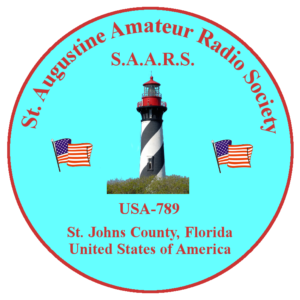International Lighthouse Lightship Weekend (ILLW) 2022
We’ve probably all seen the recent news of the severe flooding in Eastern Kentucky or the wildfires in California. In each case, as in all disaster scenarios, homes and lives are destroyed, and communication breaks down. It’s tough to call for help when the power is out, and the internet and cellular service are down.
Since ancient times, lighthouses served as physical signals of safety to mariners, guiding them to inlets and marking positions on the coast for reference. Even when mariners couldn’t see the light, fog bells and fog horns took the place of the light so they could fix their position in reference to the sound.
With the outbreak of World War II, the old U.S. Lighthouse Service was absorbed into the U.S. Coast Guard. At light stations up and down both coasts of our country, Coast Guardsmen were stationed at the top of each tower with a wireless radio to communicate ship traffic and spot Nazi or Japanese submarines operating in our home waters. The main U.S. Navy wireless radio station was located in a home that still stands northeast of our St. Augustine Lighthouse.

U.S. Navy Wireless Station from the top of the lighthouse circa 1942 “The Island Navy Base.” Source: St. Augustine Lighthouse & Maritime Museum Archives
Wireless radio has been around since the late 19th Century and is still used in many applications by the U.S. military, space, and government agencies. Fortunately, wireless radios remain a passionate hobby for many amateurs, referred to as “HAM” enthusiasts all around the globe. During times of massive, widespread power loss, HAM operators may be the only way for people to communicate across long distances, and as the name implies, no wires are needed. We are fortunate then that there are HAM radio clubs around the country where members operate for fun and volunteer their services during disasters. Our own St. Augustine club is one such group that volunteers with St. Johns County Emergency Management in time of need.
Thus, the work of lighthouse keepers and wireless radio operators was very similar. Lighthouses were a logical location for a wireless radio operator to communicate with other operators aboard ships at sea.

Wireless radio operator aboard a ship at sea, early 20th Century. Source: Used with permission, copyright: Science Photo Library, stock image V400/0023
It was in 1993 that a group of HAM operators in Scotland wanted to start a fun weekend for HAM Radio enthusiasts to meet “on the air” and see how many other stations they could contact. Many locations were considered, and finally, the operators decided on one of the original ideas. Enthusiasts would gather at lighthouses around the country and spend the weekend practicing their skills and enjoying the hobby. A summer month was also desired since they began in Scotland. Long story short, the idea spread around the globe, and other clubs eagerly set up at their local light stations and even lightships worldwide.
This event is now held on the third weekend of August every year. Today, there are approximately 450 participating stations in over 50 countries globally, and the event is known as International Lighthouse Lightship Weekend or ILLW. Our St. Augustine HAM radio club, the St. Augustine Amateur Radio Society, comes to our lighthouse annually to participate. Join us on Friday, August 20th, and Saturday, August 21st, to support our lighthouse while you learn about local heroes who serve in time of need.




